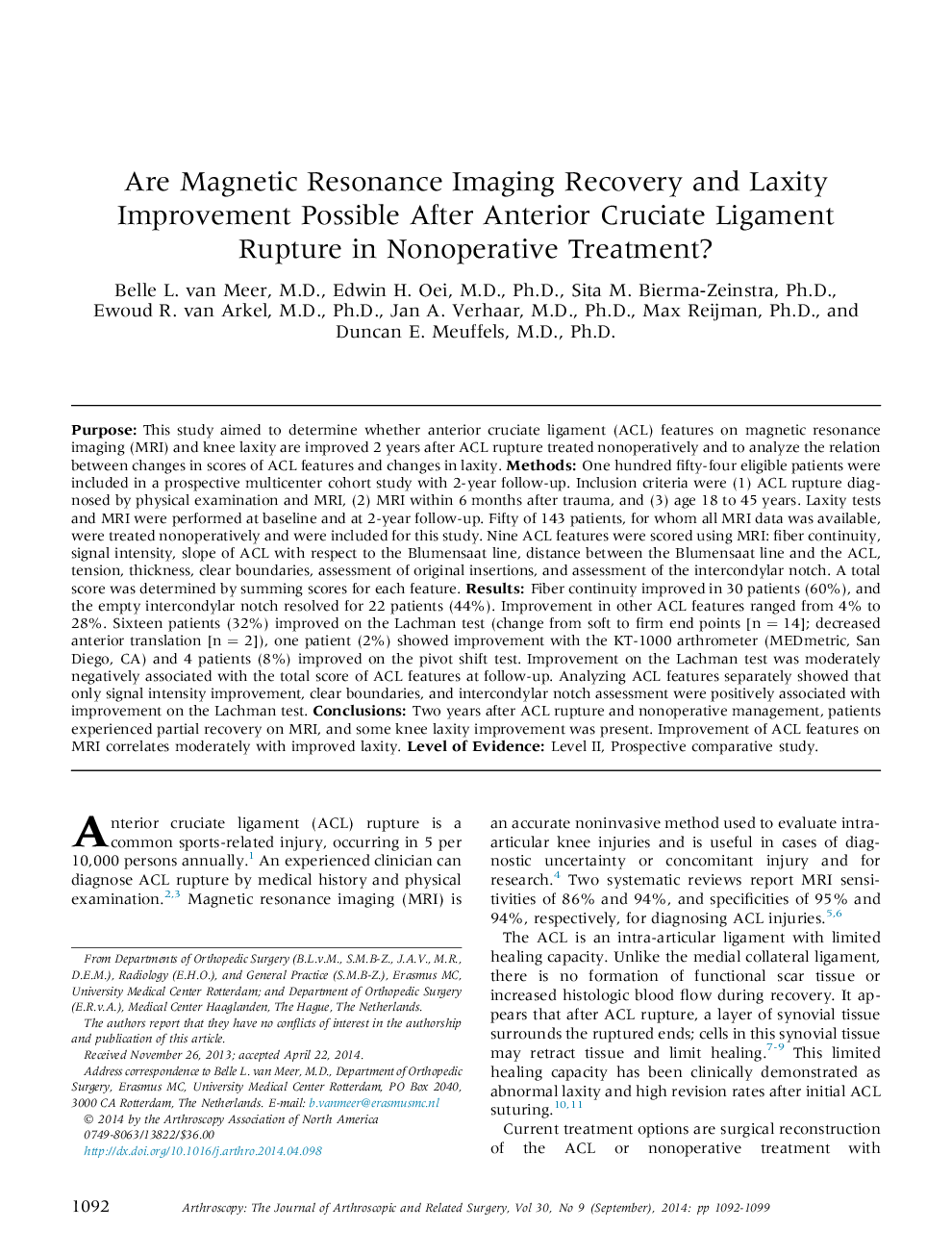| کد مقاله | کد نشریه | سال انتشار | مقاله انگلیسی | نسخه تمام متن |
|---|---|---|---|---|
| 4042865 | 1603492 | 2014 | 8 صفحه PDF | دانلود رایگان |
PurposeThis study aimed to determine whether anterior cruciate ligament (ACL) features on magnetic resonance imaging (MRI) and knee laxity are improved 2 years after ACL rupture treated nonoperatively and to analyze the relation between changes in scores of ACL features and changes in laxity.MethodsOne hundred fifty-four eligible patients were included in a prospective multicenter cohort study with 2-year follow-up. Inclusion criteria were (1) ACL rupture diagnosed by physical examination and MRI, (2) MRI within 6 months after trauma, and (3) age 18 to 45 years. Laxity tests and MRI were performed at baseline and at 2-year follow-up. Fifty of 143 patients, for whom all MRI data was available, were treated nonoperatively and were included for this study. Nine ACL features were scored using MRI: fiber continuity, signal intensity, slope of ACL with respect to the Blumensaat line, distance between the Blumensaat line and the ACL, tension, thickness, clear boundaries, assessment of original insertions, and assessment of the intercondylar notch. A total score was determined by summing scores for each feature.ResultsFiber continuity improved in 30 patients (60%), and the empty intercondylar notch resolved for 22 patients (44%). Improvement in other ACL features ranged from 4% to 28%. Sixteen patients (32%) improved on the Lachman test (change from soft to firm end points [n = 14]; decreased anterior translation [n = 2]), one patient (2%) showed improvement with the KT-1000 arthrometer (MEDmetric, San Diego, CA) and 4 patients (8%) improved on the pivot shift test. Improvement on the Lachman test was moderately negatively associated with the total score of ACL features at follow-up. Analyzing ACL features separately showed that only signal intensity improvement, clear boundaries, and intercondylar notch assessment were positively associated with improvement on the Lachman test.ConclusionsTwo years after ACL rupture and nonoperative management, patients experienced partial recovery on MRI, and some knee laxity improvement was present. Improvement of ACL features on MRI correlates moderately with improved laxity.Level of EvidenceLevel II, Prospective comparative study.
Journal: Arthroscopy: The Journal of Arthroscopic & Related Surgery - Volume 30, Issue 9, September 2014, Pages 1092–1099
